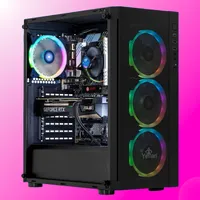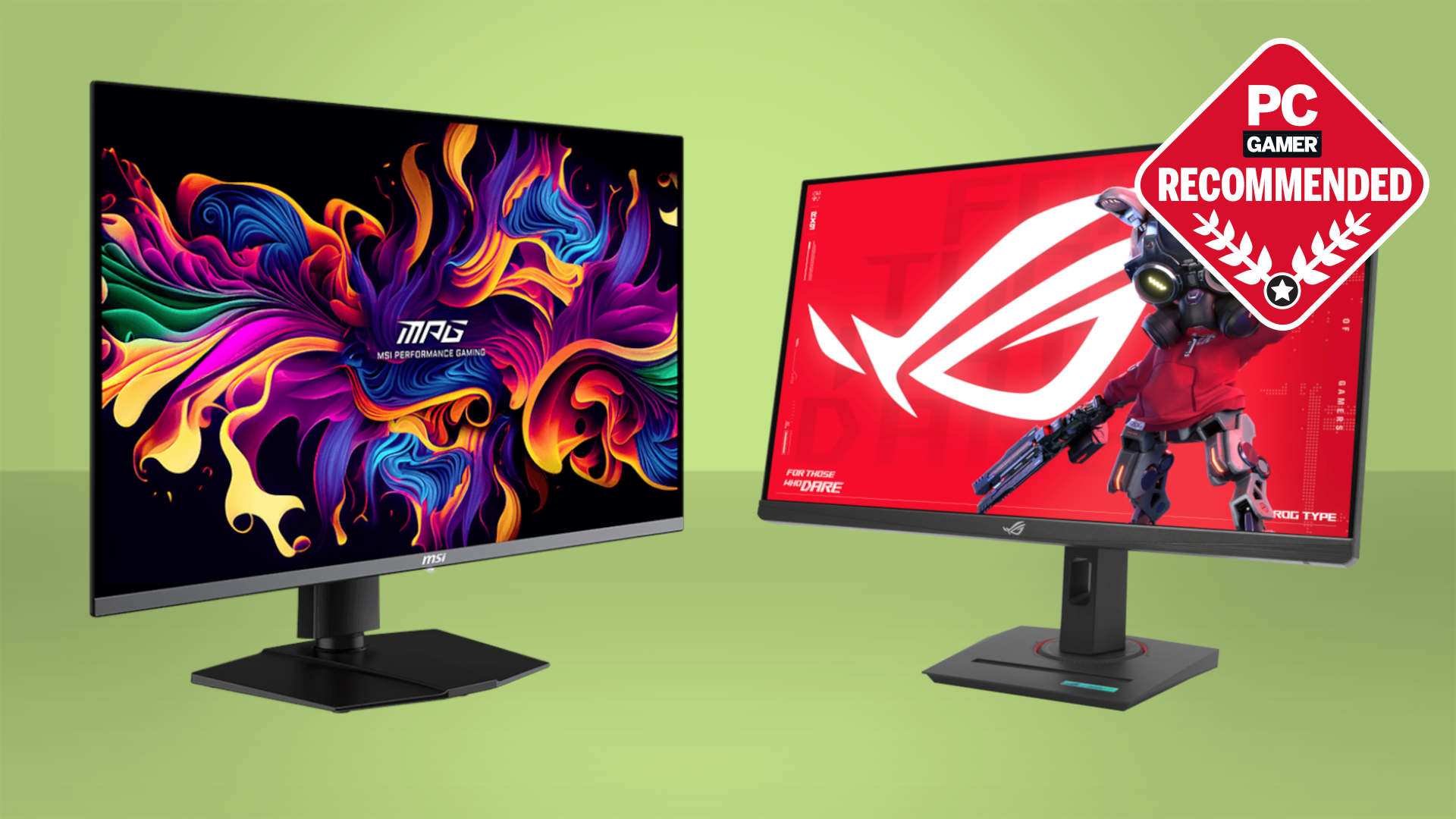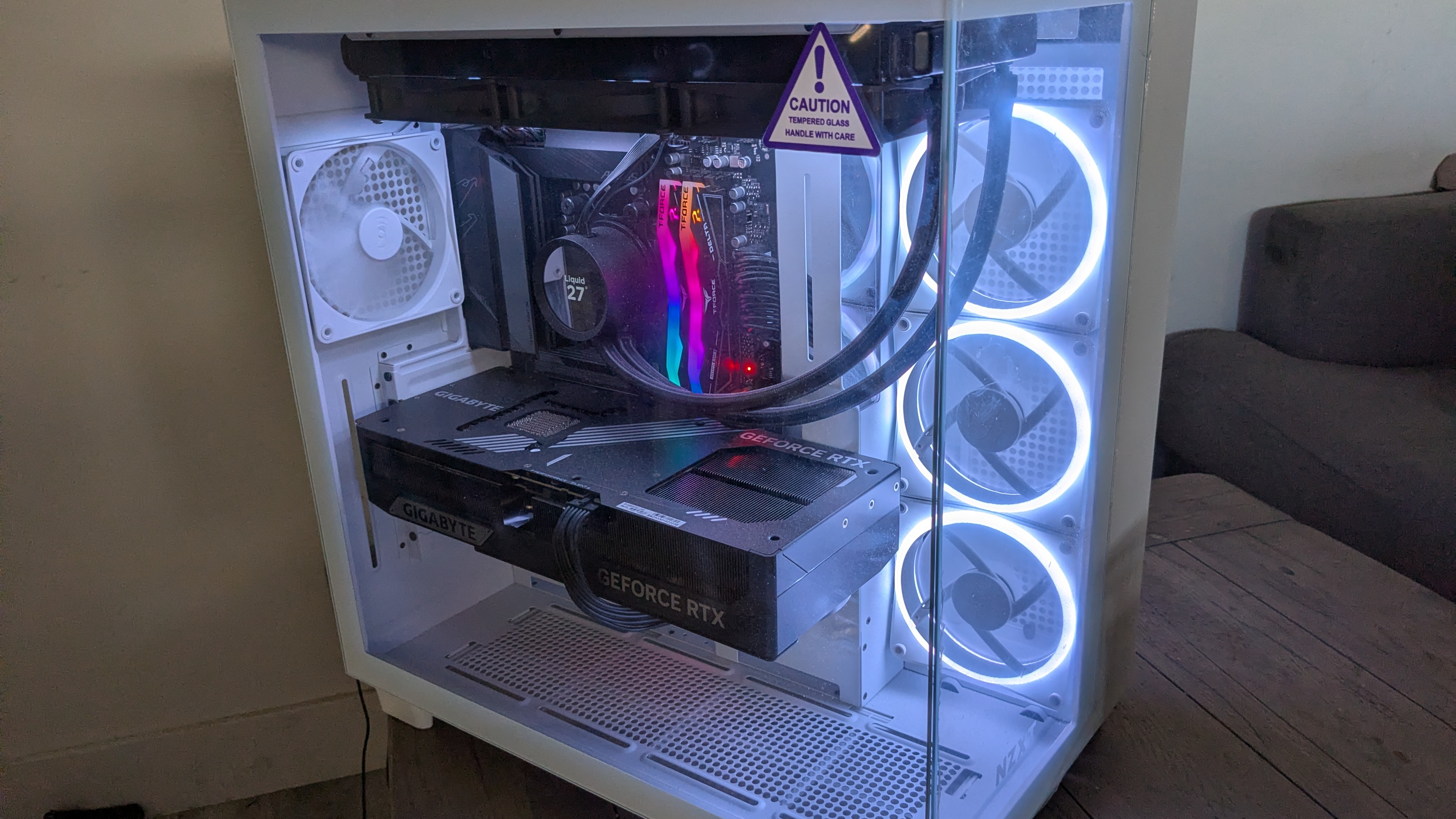Nvidia announces RTX 5060 release date of May 19 for both the $299 desktop GPU and $1,099 gaming laptops
The budget graphics silicon is hitting just before Computex... where another budget GPU beckons.
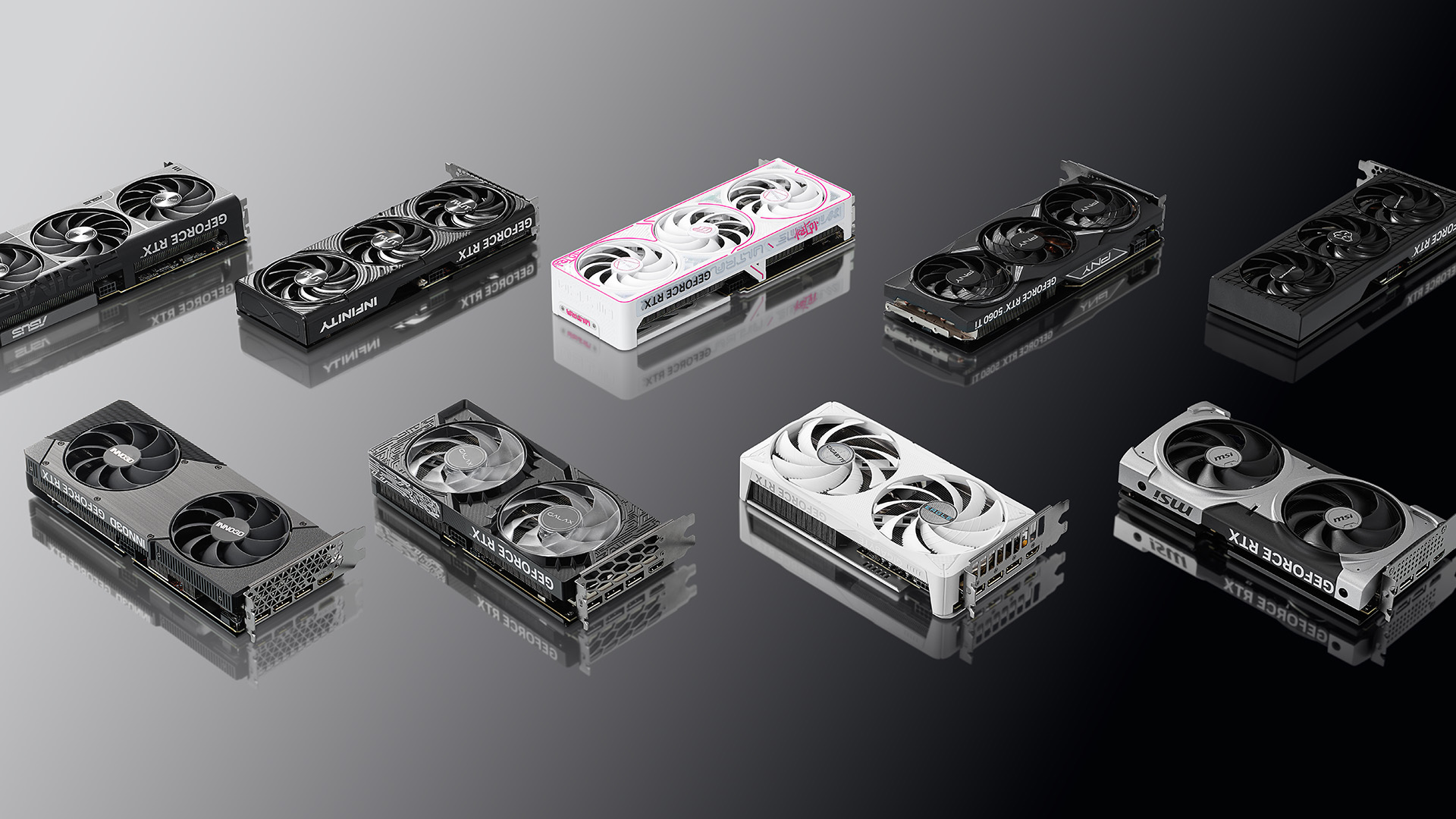
Nvidia has finally announced the RTX 5060 release date, its latest RTX Blackwell graphics card and the most affordable to date. Theoretically. With a $299 starting price, and no Founders Edition card to help enforce that never-more-ephemeral MSRP, there's precious little to make one confident that will sticker price will be stuck to.
Precious little save for the fact that you can still buy RTX 5060 Ti 8 GB cards for only $40 higher than MSRP today. So maybe, just maybe there will be a sub-$300 out there for PC gamers on a budget.
That said, the RTX 5060 Ti 16 GB version—un-arguably the more desirable of that model of GPU—is either out of stock or far too close to $500 to make it a comfortable purchase. The good news of all this, however, is that down at this level of graphics card pricing is too tight to allow much wiggle room in terms of spiking pricing.
The 8 GB RTX 5060 Ti being available for $420 puts an immediate hard ceiling on the sorts of excessive pricing that could be slapped onto the RTX 5060. The market itself might actually keep these cards in check and that should be good news for PC gamers looking for a decent card at a decent price.
We still don't have final specs for the RTX 5060 GPU itself, with only the TFLOPs count and memory bandwidth numbers actually given by Nvidia itself for the version of the GB206 it's using inside the new card. But we can kind of extrapolate from what we do know, and from what the consistent rumours have been up to now.
Essentially you're getting a ton more memory bandwidth and a theoretical 26% increase in raw GPU performance, if you just take the TFLOPs figure alone.
| Header Cell - Column 0 | RTX 5060 (*unconfirmed) | RTX 5060 Ti |
|---|---|---|
GPU | GB206 | GB206 |
TFLOPs | 19 | 24 |
CUDA cores | *3840 | 4608 |
SMs | *30 | 36 |
RT cores (4th Gen) | *30 | 36 |
Tensor cores (5th Gen) | *120 | 144 |
Memory | 8 GB GDDR7 | 16 GB / 8 GB GDDR7 |
Memory bus | 128-bit | 128-bit |
Memory speed | *28 Gbps | 28 Gbps |
Memory bandwidth | 448 GB/sec | 448 GB/sec |
Price | $299 | $429 (16 GB) / $379 (8 GB) |
Release date | May 19 | April 16 |
How that will translate to gaming performance, well Nvidia inevitably wants to quote the Multi Frame Gen figures as it pertains to frame rates. When it comes to Black Myth Wukong and Alan Wake 2 that will net you six times the performance of an RTX 3060, with other games offering 4x MFG frame rates in the order of three to four times that of the old classic GPU.
Keep up to date with the most important stories and the best deals, as picked by the PC Gamer team.
In real terms, with just plain ol' raster (a dirty phrase in Nvidia HQ) we're probably looking at between 20 and 25% higher performance. That is still not a bad return, and arguably one of the highest potential gen-on-gen uplifts of the RTX 50-series outside of the RTX 5090 itself.
Launching just the day before Computex—which starts on May 20—is an interesting choice, especially considering we're anticipating the AMD RX 9060 to be announced at its keynote with Jack Huynh on May 21. There have even been rumours of an Intel B770 making some sort of appearance at the show, too.
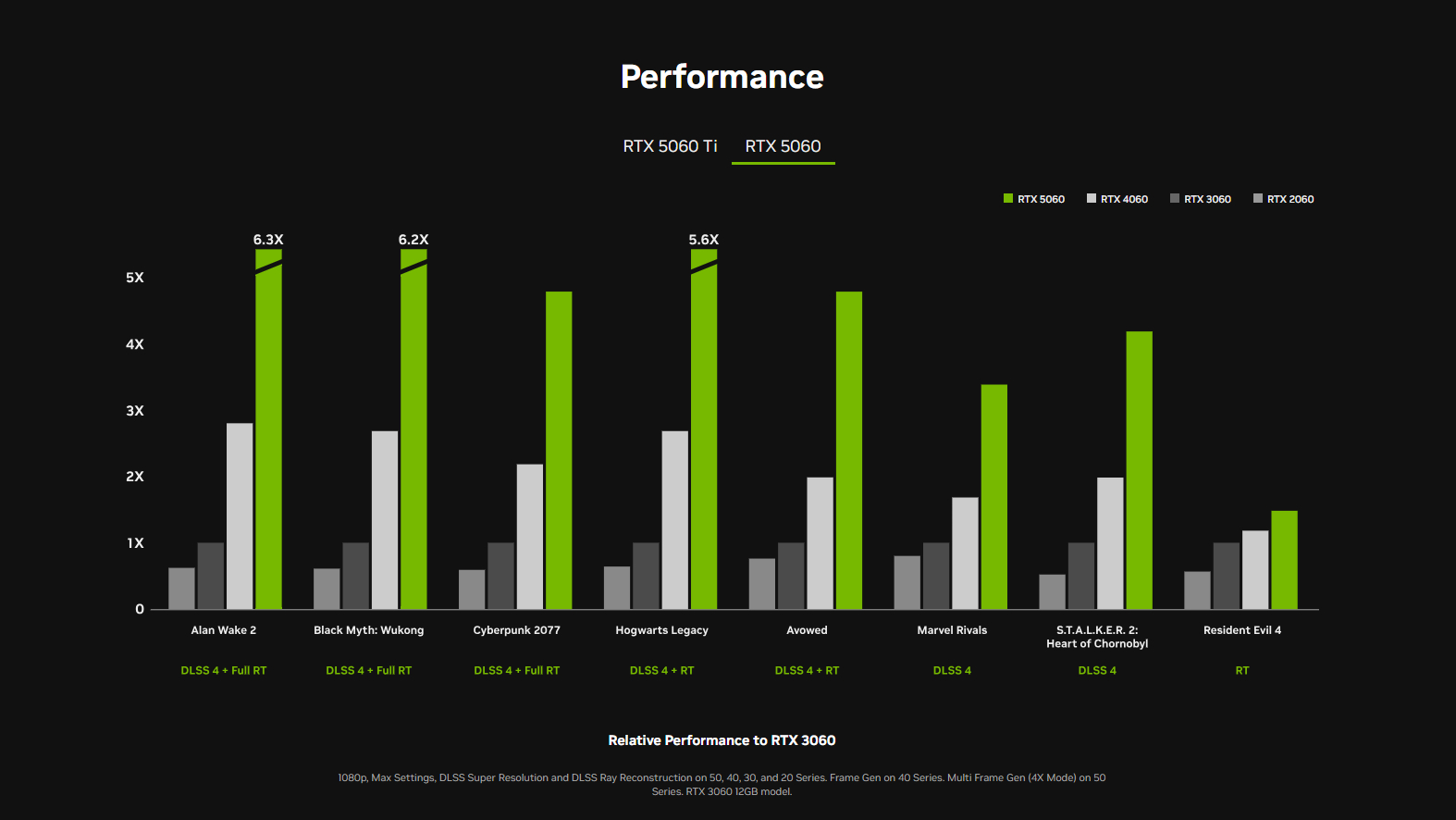
Interestingly, Nvidia also notes that RTX 5060-based gaming laptops will also finally see the light of day come May 19, with affordable machines starting at $1,099 which is a teeny bit cheaper than the RTX 4060 systems started out life at. These will be super-interesting laptops, and if MFG can deliver decent gaming image quality on an RTX 5060 GPU, they will absolutely be the best gaming laptops for budget gamers.
Best gaming PC: The top pre-built machines.
Best gaming laptop: Great devices for mobile gaming.

Dave has been gaming since the days of Zaxxon and Lady Bug on the Colecovision, and code books for the Commodore Vic 20 (Death Race 2000!). He built his first gaming PC at the tender age of 16, and finally finished bug-fixing the Cyrix-based system around a year later. When he dropped it out of the window. He first started writing for Official PlayStation Magazine and Xbox World many decades ago, then moved onto PC Format full-time, then PC Gamer, TechRadar, and T3 among others. Now he's back, writing about the nightmarish graphics card market, CPUs with more cores than sense, gaming laptops hotter than the sun, and SSDs more capacious than a Cybertruck.
You must confirm your public display name before commenting
Please logout and then login again, you will then be prompted to enter your display name.
